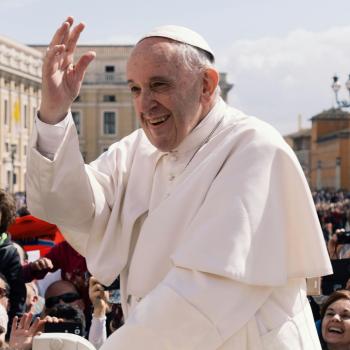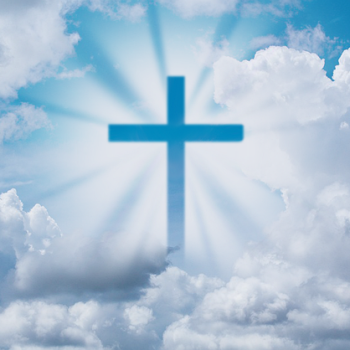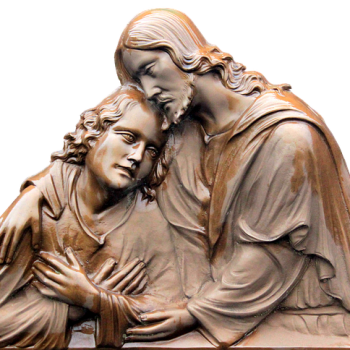There are some people who think Catholics are not Christians. I don’t know how they come to that conclusion, but an equally outrageous notion is that Catholics don’t read the Bible.
When we lived in Bible-belt country, on occasion I would hear Christian people emphasize that they went to a Bible-based church. I thought, “What other kind of base could there be?”
I suppose they could have been comparing their churches to those offbeat religions that blend Western and Eastern practices, or cults that follow some new Messiah. However, I suspect they were referring not only to those but to the Catholic Church.
Catholics don’t carry our Bibles to church. We don’t need to. We’ll be reading from the Bible at Mass in our missals. Since the missal is not the Bible, perhaps some non-Catholics misunderstand and think we have junked the Bible.
The Lectionary
Instead, what is happening is that we read the whole Bible in themed selections from a lectionary, that is, a schedule of passages. For a brief and easy-to-understand article explaining the history of the lectionary, go to https://uscatholic.org/articles/201805/how-are-the-sunday-readings-chosen/
In short, the evolution of the readings at Mass began with early Christians reading whatever scriptures were available at hand. By the fifth or sixth century, the priests were using Bibles annotated to recommend readings for a particular Sunday.
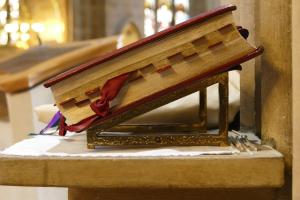
The next century saw the Mass readings being put into separate books apart from the whole Bible. Nine hundred years later, the Council of Trent collected all the readings and prayers for Mass into what we know as the Roman Missal.
According to the US Catholic article: “The current Roman Catholic lectionary was created in 1970 by a commission set up after Vatican II to implement the council’s liturgical reforms and has since been slightly revised twice.”
The Readings
The readings are “organized on a three-year cycle: Year A is the year of Matthew, Year B is Mark, and Year C is Luke. The Gospel of John is used each year at Christmas, Lent, and Easter, as well as to round out Year B, since Mark is short.
“An appropriate gospel passage is assigned for each Sunday of Advent, Christmas, Lent, and Easter. In Ordinary Time, the remainder of the gospel is read more or less in order, skipping over the parts read in the special seasons.”
The other readings are chosen to match the theme of the gospel. I discuss this thematic relationship in a recent blog about how the music at Mass is selected to reflect the theme of the readings: https://www.patheos.com/blogs/musingsfromthepew/2022/02/meaningful-music-at-mass/
The first reading is from the Old Testament (at Easter, from the Acts of the Apostles). The second reading, for balance, is from a New Testament letter (at Easter, from the Book of Revelation).
The Responsorial Psalms are, of course, from the Psalms, as are the Antiphons usually, but they can also come from one of the other gospel or letter writers. Wherever their origin, the passages will be theme-related—mercy, sacrifice, love, justice, etc.
Thus, all the readings tie together not only for the unity of the message, but also to show from Old Testament to New Testament the fulfillment of the prophecies and the consistency of God’s plan through the ages.
The Bible: Catholic Origins and Continuance
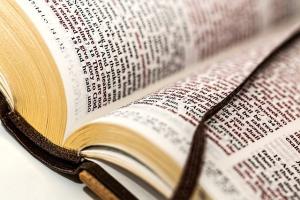
The end result of the lectionary design is that Catholics read most of the Bible in the three-year cycle. In its wisdom, the Church makes sure we can’t neglect the Bible or skip around to just favorite passages—we get the whole thing repeatedly!
So, whoever says Catholics don’t read the Bible is totally wrong. Anyone who says we are not a Bible-based church doesn’t know our history or the history of the Bible. After all, who assembled the Bible, in the first place? Why, Catholics, of course!
A list of the proposed books of the Bible appears in Athanasius’ Easter letter in 367 AD. The biblical canon was approved by the Council of Rome in 382 and confirmed at the Councils of Hippo in 393 and Carthage in 397.
Consequently, long before the Protestants came into being and removed seven books from the Bible, the early Christians (Catholics) united Jewish Scriptures and the inspired writings of the first church leaders into one book.
This collection was called the Bible because the Greek word for book was “biblia” and the city where papyrus was made was named Biblos.
Thus, the Bible is definitely Catholic, and Catholics are definitely Bible-based in their worship. The Catholic liturgy was formed from the Bible, feeds from the Bible, and remains true to God’s Word.




